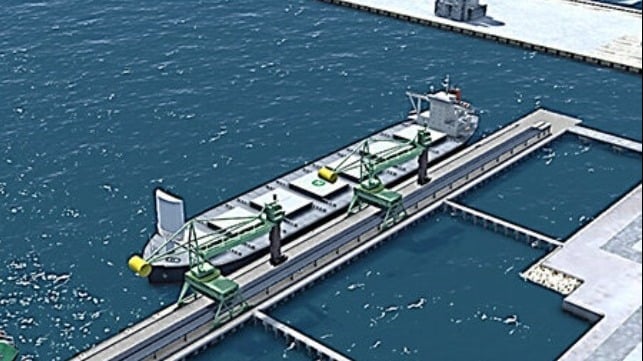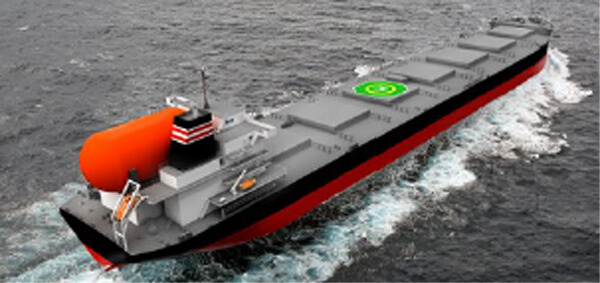Japan Certifies Wind-Assist Sail Propulsion Ships

Japan’s Ministry of Land, Infrastructure, Transport and Tourism certified new ship designs including the use of hard sail and a wind kite to provide propulsion assistance and reduce the vessels’ environmental impact. The certification came after a review of the plans under Japan’s Maritime Industry Strengthening Law enacted in May 2021 designed to provide support for the introduction of that would have an excellent environmental performance.
The Oshima Shipbuilding Company was the first shipbuilder certified under the program in September 2021. With the shipyard’s plan certified by the ministry, Oshima announced today that it will be celebrating the 11,000 LNG-fueled ship it has built with a unique program for NYK Line. The project was one of four certified by the ministry. In addition, the shipyard also received certification for their 11,010 ship, which will be built with Mitsui O.S.K. and will be the first to incorporate the Wind Challenger concept for a retractable rigid sail.
Mitsui O.S.K. confirmed the timeline for the introduction of the wind propulsion project while announcing the government certification. Under the plan presented to the ministry, MOL working with Oshima is building an 88,606 dwt bulk carrier. The vessel is scheduled for delivery in October 2022 and will operate mainly between Japan and Australia.
The Wind Challenger project began more than a decade ago as academic research and MOL and Oshima took over the project working on designs since 2019. The concept is to add a hard sail to large vessels to add supplemental wind energy to the propulsion. The rigid sail, which is made of composite material, stands nearly 170 feet in high when fully raised at sea, but can be lowered to permit the vessel to pass under overhead obstacles or while docked in port for loading and unloading. MOL announced in February 2022, that testing had begun on the first prototype sail on shore at the shipyard. They expect the additional propulsion power from wind can reduce a vessel's greenhouse gas emissions by an estimated five to eight percent compared to conventional ships of the same class.
The ministry also certified K Line’s project to develop and install an automatic kite that would also be deployed to supplement propulsion. The certified project calls for the construction of a 176,700 dwt bulk carrier that would operate between Japan and Australia. The vessel will be fueled by LNG and when combine with the kite they expect to produce a 40 percent reduction in emissions.

Oshima developed the design for the LNG-fueled vessel placing the tank on the stern to improve operations and maximize volume for the coal being transported (NYK)
NYK also received certification for an LNG-fueled bulker scheduled to be completed in March 2023. The vessel, which will transport coal to a power plant operated by Kyushu Electric Power Co., incorporates new design features to improve operational performance while reducing emissions. According to the shipyard, by devising the mounting position of the LNG tank and the shape of the living quarters, they developed a hull form that ensures sufficient safety while maintaining the load volume and reducing fuel consumption. They expect to reduce carbon dioxide by about 40 percent by using LNG as a fuel and improving the hull form.
The ministry reports that it will continue to work with shipowners and shipyards to certify the development of ships with excellent environmental performance.
